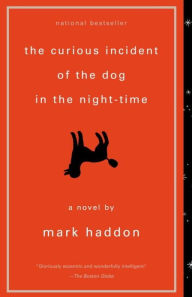

A Tale for the Time Being
by
Embark on a thought-provoking and multi-layered exploration of time, identity, and interconnectedness with “A Tale for the Time Being” by Ruth Ozeki, a captivating work of Fiction that weaves together the lives of two women across time and space. In this intricate narrative, readers will be immersed in a tale that transcends cultural boundaries, offering profound insights into the nature of existence and the threads that bind us all.
Summary of A Tale for the Time Being:
Within the pages of “A Tale for the Time Being,” Ruth Ozeki introduces readers to the parallel lives of Nao, a teenage girl in Japan, and Ruth, a writer on a remote island in British Columbia. The narrative unfolds as Ruth discovers Nao’s diary washed ashore, leading to a complex interplay of time, culture, and the shared human experience. As the lives of the two women become intertwined, the novel becomes a meditation on the nature of time, consciousness, and the impact of storytelling.
Analysis of A Tale for the Time Being:
Delve into Ruth Ozeki’s intricate storytelling in “A Tale for the Time Being.” The narrative seamlessly navigates between the perspectives of Nao and Ruth, offering a meditation on the fluidity of time and the interconnectedness of human lives. Ozeki’s narrative prowess invites readers to reflect on the layers of existence, the power of narrative, and the ways in which stories shape our understanding of the world.
Characters in A Tale for the Time Being:
Meet the compelling and intricately drawn characters that populate “A Tale for the Time Being,” with Nao and Ruth at the heart of a narrative that transcends cultural and temporal boundaries. Ruth Ozeki’s characterizations add depth to the story, allowing readers to connect with the joys, sorrows, and personal growth of the characters as they navigate the complexities of their lives.
Main Plot of A Tale for the Time Being:
As the story progresses, follow the main plot that unfolds across continents and through time. Ruth Ozeki crafts a narrative that explores Nao’s coming-of-age in Japan, her connection with Ruth in Canada, and the ways in which their stories intersect. The novel becomes a tapestry of cultural exploration, self-discovery, and the timeless quest for meaning.
Major Themes in A Tale for the Time Being:
Uncover the major themes explored in “A Tale for the Time Being,” including the nature of time, the impact of cultural identity, and the role of storytelling in shaping human consciousness. Ozeki’s narrative prompts readers to reflect on the interconnectedness of lives, the transience of existence, and the profound influence of stories across generations.
Genre of A Tale for the Time Being:
Nestled within the Fiction genre, “A Tale for the Time Being” encapsulates the essence of literary exploration, cultural commentary, and the interplay of narrative structures. Ruth Ozeki contributes to the rich tradition of fiction, offering readers a thought-provoking and emotionally resonant experience within the intricately woven tale.
Exploration of Cultural Identity:
Witness the exploration of cultural identity in “A Tale for the Time Being,” as Ozeki delves into the experiences of Nao as a Japanese teenager and Ruth as a Canadian writer. The novel provides insights into the complexities of cultural intersections and the ways in which identity is shaped by time, place, and storytelling.
Reviews for A Tale for the Time Being:
Explore the critical acclaim and reader responses to “A Tale for the Time Being.” Ruth Ozeki’s ability to blend narrative complexity with profound themes has garnered praise, making this novel a standout in the Fiction genre.
Writer’s Contribution to Literary Exploration:
Recognize Ruth Ozeki’s contribution to literary exploration through “A Tale for the Time Being.” As an accomplished writer, Ozeki invites readers to engage with the intricacies of time, identity, and interconnected narratives, offering a work that transcends the boundaries of traditional fiction.
In “A Tale for the Time Being,” Ruth Ozeki invites readers into a contemplative exploration of time, identity, and the interconnected nature of human existence. The novel serves as a testament to the power of storytelling in shaping our understanding of the world and offers a thought-provoking journey that transcends cultural and temporal boundaries.



Reviews
There are no reviews yet.